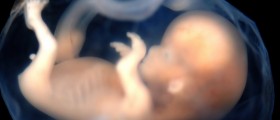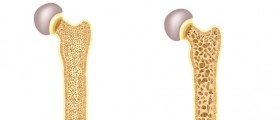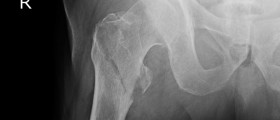Coccyx (Tailbone)
Coccyx or tailbone is terminal part of the vertebral column. Unlike the rest of the vertebral column where each vertebra is separated, coccyx consists of three to five coccygeal vertebrae, but these bones are fused and actually make one larger bone. Trauma and injury of the coccyx lead to coccydynia. Coccydynia is actually a condition in which the leading signs are pain and discomfort in coccygeal area. Injury of this area can be a cause of bruises, the tailbone may be dislocated and the most severe outcome of the injury is fracture of coccygeal bone. The healing process takes some time but the bone eventually heals completely without additional need for surgery. Women are more affected by this type of injury comparing to men.
Symptoms of Coccyx Injury
The injury or fracture of coccyx causes intensive pain localized in coccygeal area. Apart from the pain the whole coccygeal area is tender to touch. The pain intensifies when a person sits especially, if this position is maintained for longer period of time. A few days after the injury a bruise will appear.

The person can additionally complain about the pain which also intensifies during defecation or any other strenuous activity. In women pain may occur during intercourse.
In case that a person has injured this area and he/ she feels pain especially while sitting the best way to do is to report the problem to the doctor. This way the doctor will examine the patient, perform certain tests and definitely confirm or rule out the diagnosis of coccygeal fracture.
A doctor may examine the entire spine. The doctor can also perform rectal examination and feel the parts of the fractured bone. Palpation of the affected area can be painful. X-ray of the injured area is the simplest way of evaluation. If there is a fracture it will be visible on the X-ray. Some doctors like to take x-rays in two positions, sitting and standing. This way the evaluation of the potential fracture can be simpler and more reliable.
- The coccyx is the terminal region of the spinal column. Although the singular term "tailbone" implies that this is a single bone, it actually consists of 3 to 5 separate vertebral bodies, with substantial variability regarding whether they are fused together or not. The coccyx articulates with the sacrum through a sacrococcygeal joint (including a fibrocartilaginous intervertebral disc and bilateral zygapophysial [facet] joints). The sacrococcygeal and intra-coccygeal joints allow for a modest amount of coccygeal movement, which is typically forward flexion while weight-bearing (sitting). The coccyx is a Greek word that means the beak of a cuckoo bird as the side view of the tailbone resembles the side view of a cuckoo bird's beak.
- Direct vertical trauma, repetitive microtrauma, and childbirth are common causes of coccyx pain. However, more serious underlying causes must be excluded, such as infections (including both soft tissue abscess and osteomyelitis) or malignancy (including chordoma, which has a high fatality rate).
- The outcome of direct vertical trauma to the coccyx can vary from contusion to fracture-dislocation of the coccyx. Traumatic or non-traumatic compromise of the coccygeal ligaments can result in coccygeal dynamic instability (excessive movement of the coccyx during weight-bearing, while sitting). Abnormal mobility of the coccyx can result in coccygeal pain. Abnormally mobile coccyges can be either hypermobile (due to lax ligaments) or hypomobile (rigid). The coccyx may be subluxated anteriorly or posteriorly, unstable, or even dislocated.
- Factors related to the high risk of developing coccydynia are female sex and obesity as body mass index may affect the way a person sits or the amount of weight placed upon the coccyx. Coccydynia is five times more common in females than in males. Rapid weight loss has been reported to be a risk factor for coccydynia due to the loss of the cushioning effect of adipose at the buttock region. Other reported risk factors include osteoarthritis, osteomyelitis, and contact sports.
- AP radiographs can reveal coccyx scoliotic (lateral deviation) deformity. Lateral views are always indicated as coccyx curvature can be classified into four different types: Type I: coccyx is slightly curved forward. Type II: coccyx is pointed straight forward. Type III: coccyx has a sharp forward angulation. Type IV: coccyx shows subluxation at the sacrococcygeal or the intercoccygeal joint.
- Many patients with coccydynia experience relief of symptoms within weeks or months of onset, whether they receive medical treatment or not. The success of conservative treatment has been reported to be 90%.
Causes of Coccyx Fracture and Injury
Direct trauma to the coccygeal area is the most common cause of the tailbone fracture. The person can end up with fracture if he/ she falls directly onto the bone. Similarly, direct blow to the coccyx is additional cause of the fracture. Tailbone can be injured even during delivery. Coccyx can also be injured if it is exposed to repetitive friction. This is common for rowing or cycling.
And finally, in not so often cases coccygeal bone can be destroyed by infections or tumors which at some point can lead to the fracture.

















Your thoughts on this
Loading...